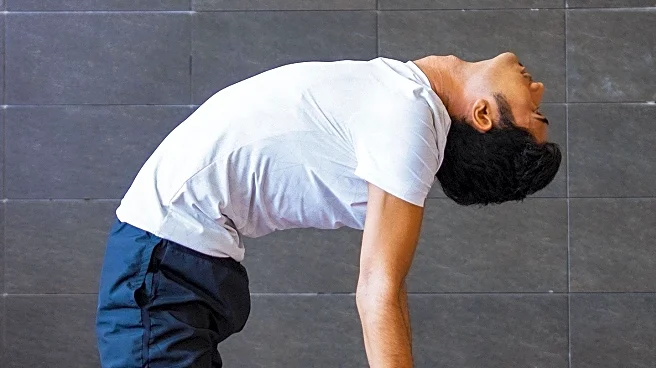What's Happening?
Recent research conducted by the University of Sharjah in the UAE and Manipal Academy of Higher Education in India has raised questions about the cardiovascular benefits of yoga, particularly in younger adults. The study reviewed 10 studies comparing yoga with other forms of exercise in sedentary adults, focusing on vascular function, which is crucial for cardiovascular health. The findings suggest that while yoga may improve blood flow in middle-aged adults, it does not significantly reduce arterial stiffness, a key indicator of heart health. In contrast, other exercises like Tai Chi, reformer Pilates, and high-intensity interval training (HIIT) showed more consistent benefits in improving vascular function.
Why It's Important?
The study's findings are significant as they challenge the widely held belief that yoga is highly beneficial for cardiovascular health. This could impact public health recommendations and individual exercise choices, particularly for those seeking to improve heart health. The research suggests that incorporating more vigorous activities into workout routines may be necessary for better vascular health outcomes. This could lead to a shift in how exercise is prescribed and practiced, emphasizing the importance of exercise intensity and duration over simply engaging in physical activity.
What's Next?
The study's authors suggest that public health campaigns could emphasize the importance of movement as medicine, potentially encouraging a mix of exercise and yoga to make heart health more accessible and culturally appropriate. This could lead to new guidelines and recommendations for physical activity, particularly targeting sedentary lifestyles and promoting exercises that offer more substantial cardiovascular benefits.
Beyond the Headlines
The research highlights the need for a nuanced understanding of exercise benefits, particularly in relation to age and existing health conditions. It underscores the importance of personalized exercise regimens that consider individual health profiles and goals. Additionally, the study may prompt further research into the specific mechanisms by which different exercises impact vascular health, potentially leading to more targeted interventions.











